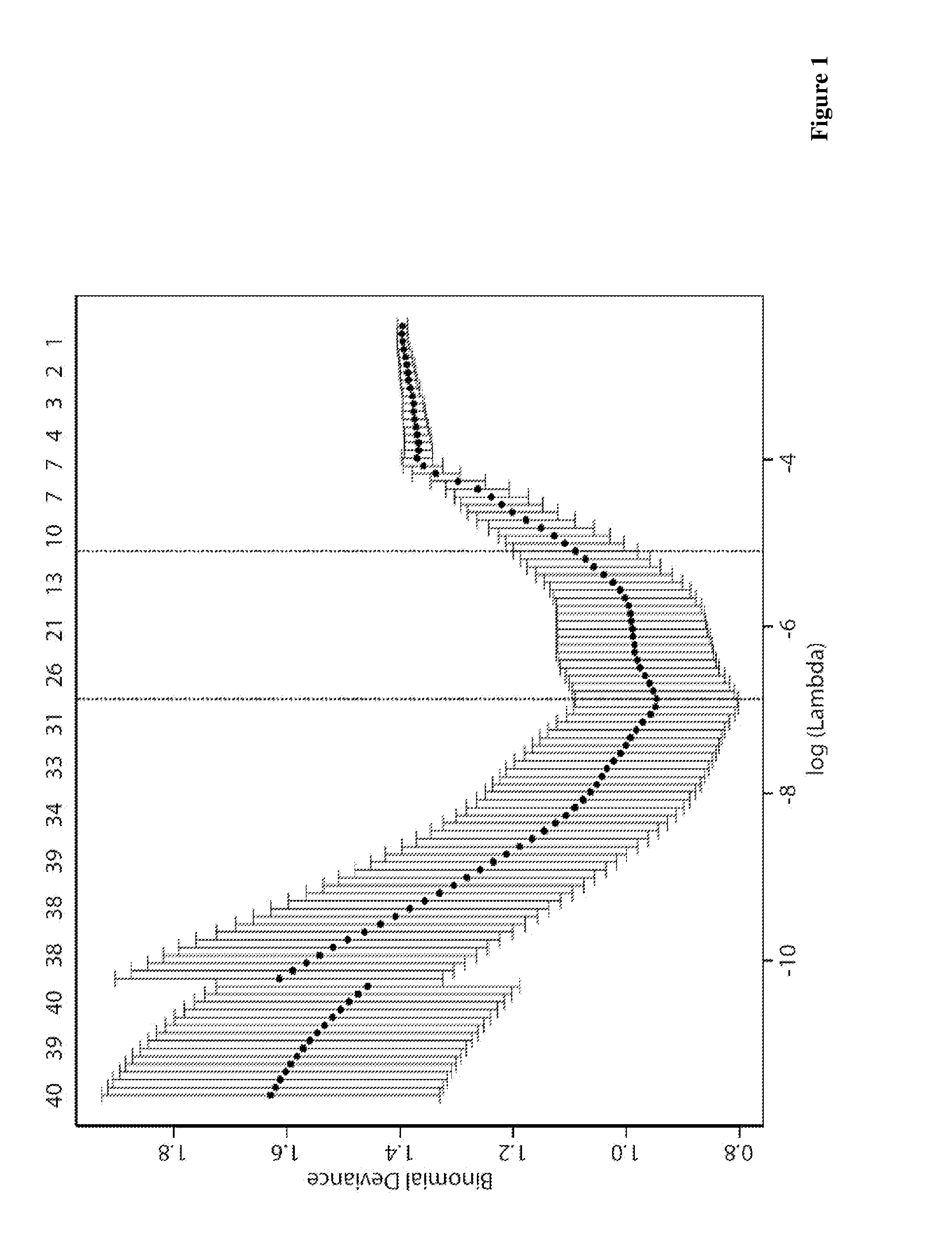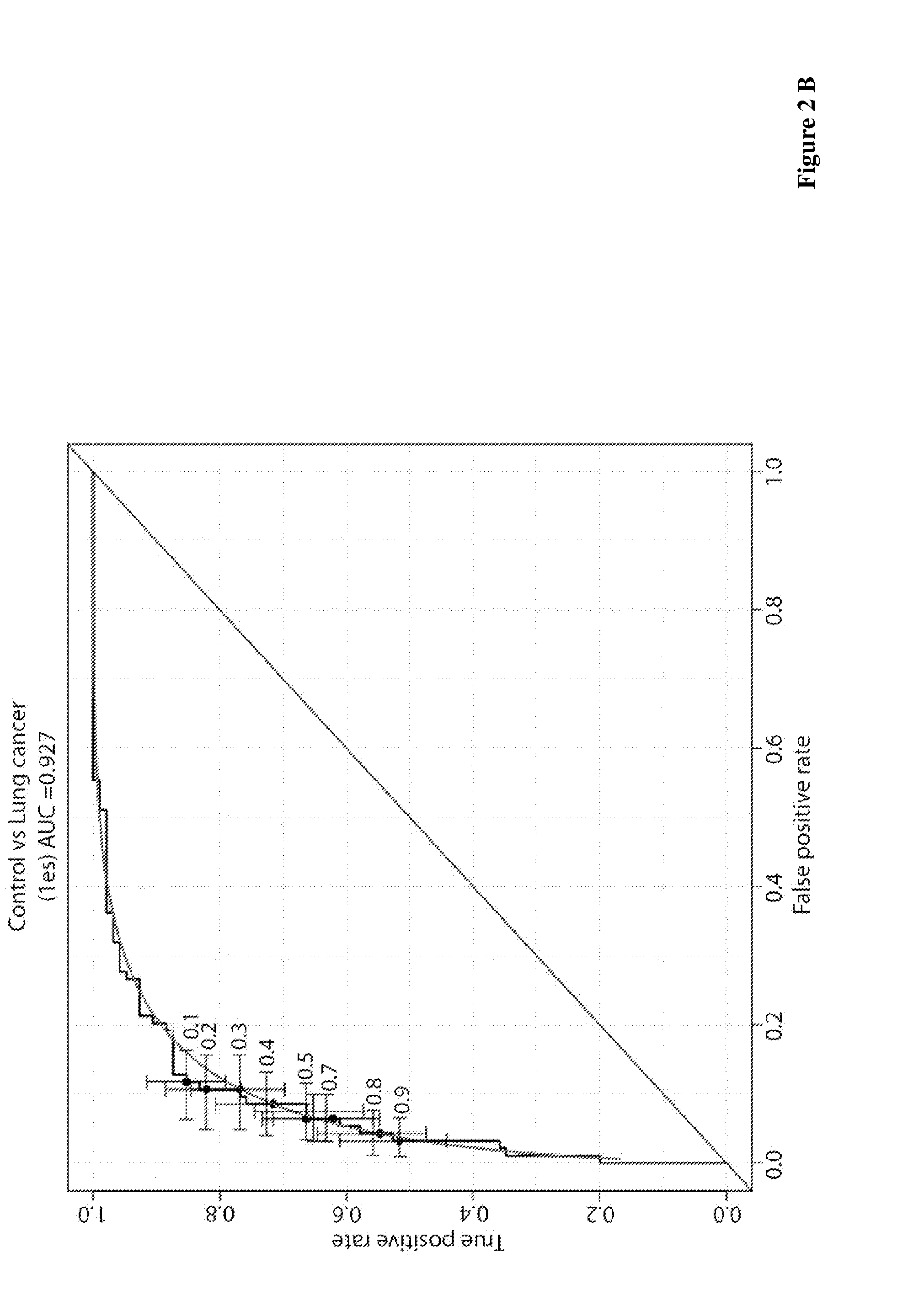Lung cancer diagnosis
a lung cancer and lung cancer technology, applied in the direction of peptide sources, instruments, chemistry apparatuses and processes, etc., can solve the problems of poor efficacy of other treatment methods than surgery, limited brca1 studies, and only 15% survival for advanced colorectal cancer. , to achieve the effect of rapid, reliable, sensitive and specifi
- Summary
- Abstract
- Description
- Claims
- Application Information
AI Technical Summary
Benefits of technology
Problems solved by technology
Method used
Image
Examples
example 1
Peptide Choice and Synthesis
[0113]Forty-one different peptides comprising SEQ ID NO: 1 to 41 were defined and selected following studies on expression of isoforms of BARD1 (SEQ ID NO: 42-51). These experiments involved siRNA-based specific repression of one isoform and confirmation of the repression of the potential translation product on Western blots, and overexpression of the isoform and confirmation of the expression of the endogenous protein of the correct size.
[0114]Studies on isoform γ (SEQ ID NO: 47), for example, confirmed that this isoform expresses a protein encoded in exons 1 to 3 (deletion of exon 4 and exons 5-11 not expressed due to stop codon in exon 5). Based on these studies, forty-one peptides were defined (SEQ ID NO: 1 to 41)
[0115]The forty-one different peptides of SEQ ID NO: 1 to 41 were synthesized by standard peptide solid phase synthesis procedures known to those skilled in the art. Purity of the peptides was at least 80%. Peptides were dissolved in stock so...
example 2
Preparation of Assay Using the Peptides
[0117]The 41 peptides of Example 1 were deposited on microtiter wells using the Meso Scale MSD technology platform (Mesoscale, MD 20850-3173, Rockeville, USA). In particular, each peptide was deposited at a determined amount on a spot of multi spot plates. Each multi spot array comprises a carbon-coated working electrode on which the peptides are deposited. For detection of antibody binding, electric stimulation results in generation of light via a sulfo-tag marker molecule (ruthenium II tris-bipyridine-(4-methylsulfonate) NSH ester. The plating of the peptides was performed by Mesoscale. Each well contains 10 different spots, so that 10 different peptides were plated in one well of a 96-well microtiter plate.
example 3
Analysing Blood Samples of Patients and Control Subjects
[0118]Blood samples were collected from lung (n=178), colon (n=80), benign breast (n=9), malignant breast (n=14), benign ovarian (n=50), malignant ovarian (n=43), and neuroblastoma (n=20) human cancer patients and healthy controls (n=266). Gender and age was known from a majority of the subjects.
[0119]Blood samples were analyzed using the peptide-coated microtiter plates described in Example 2. Using the Meso Scale SECTOR Imager 2400 (SI2400) apparatus and the Discovery Workbench 3.0 Software, numerical values related to the amount of antibodies in the blood sample are produced.
[0120]Data analysis showed that not all patients' sera contained antibodies against the same epitopes of BARD1, but that there was a wide-spread distribution of different combinations of epitopes / peptides that were positive in cancer patients. The most distinctive and least distinctive peptides were determined from these results.
[0121]To confirm that ant...
PUM
 Login to View More
Login to View More Abstract
Description
Claims
Application Information
 Login to View More
Login to View More - R&D
- Intellectual Property
- Life Sciences
- Materials
- Tech Scout
- Unparalleled Data Quality
- Higher Quality Content
- 60% Fewer Hallucinations
Browse by: Latest US Patents, China's latest patents, Technical Efficacy Thesaurus, Application Domain, Technology Topic, Popular Technical Reports.
© 2025 PatSnap. All rights reserved.Legal|Privacy policy|Modern Slavery Act Transparency Statement|Sitemap|About US| Contact US: help@patsnap.com



